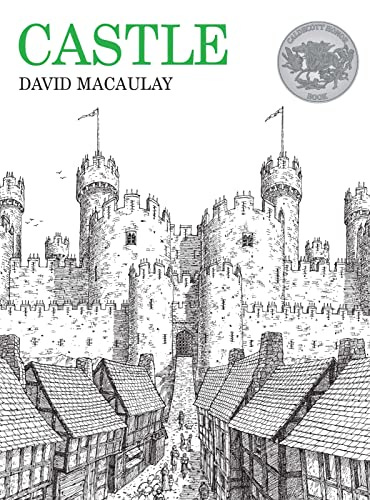Ever since I ran across it in junior high, I’ve been intimidated by the “Castles, Strongholds, and Hideouts” section on page X52 of Zeb Cook’s and Steve Marsh’s Dungeons & Dragons Expert Rulebook.
When I went back to review it for this article, I was surprised to discover the entire section takes up only three-quarters of a page. In my imagination, it had expanded to multiple pages of details about how to construct a castle—perhaps because in Chris Gonnerman’s Basic Fantasy, the analogous section does take up three pages.
I find this section intimidating because, while I’m technically-minded and detail oriented, the idea of spending hours figuring out the dimensions and cost of a fantasy castle has never fired my imagination. To the contrary, I wonder if anyone has ever used these rules as intended, and if they have, did they consider this to be time well-spent? Or did they do what I would do—hire a bunch of specialists to build my castle for me, in an attempt to push all the “busy-work” back on the DM?
I understand how cool it would be to construct your character’s dream castle, complete with secret passages and traps, all ready for the day when your nemesis comes at you at last! Like George Bailey tells his father, however, in It’s a Wonderful Life:
“It's this business of nickels and dimes and spending all your life trying to figure out how to save three cents on a length of pipe. I'd go crazy.”
In part, I’ve never built a castle in D&D because I don’t want to spend my limited playing time pretending to be an architect. I’d rather pretend to be an adventurer.
Consequently, it’s somewhat surprising I enjoy author/illustrator David Macaulay’s Castle as much as I do.
Synopsis
An entry under the “Non-Fiction: Young Adult” heading of the “Inspirational Source Material” section in Tom Moldvay’s Dungeons & Dragons Basic Rulebook, Macaulay’s Castle uses the construction of an imaginary fortress to explain how real castles were actually designed and built in the thirteenth century. We learn why King Edward I of England makes Kevin le Strange lord of an area in Wales known as Aberwyverne, and why he then encourages Lord Kevin to build both a castle and a town on this new estate. Macaulay, a gifted illustrator, shows us how both the castle and town are laid-out, describing in the text the reasoning behind the various construction decisions made by Master James, the engineer overseeing the project.
Perhaps I like this book because, while I don’t want to role-play an architect, I find history fascinating. Like many players, my mental pictures of castles come more from fantasy novels, television, and movies than from actual history. It’s therefore quite interesting to learn how drawbridges and portcullises actually worked, how thick castle walls really were, and what sort of toilets were used in medieval fortresses that might find themselves under siege.
Influence on D&D
I don’t know if it was Cook or Marsh who wrote the “Castles, Strongholds, and Hideouts” section of the Expert rules. Whomever it was, I don’t know if they read Macaulay’s Castle. Moldvay evidently compiled the list in the Basic rules. Something of the spirit behind Castle, however, seems to have animated the writer of the section in question, with its focus on castle walls, moats, and gatehouses, replete with wood or stone stairs, various types of doors, and shuttered or barred windows. We can credit authors like Macaulay with providing the details informing D&D’s domain management mini-game—of which building a castle is just a piece.
Inspiration for your game
I don’t know that Castle, in-and-of itself, will interest players in building a stronghold, but it includes a number of items DMs may find useful to make their castles, and the surrounding towns, more interesting and realistic.
Curtain time!
Thirteenth century castles in Wales tended to have two curtain walls—an outer curtain, which formed the first line of defense, and an inner curtain around the “inner ward”, which protected the living and working areas.
When you gotta go, you gotta go…
This type of castle had indoor toilets, built into the curtain walls.
The toilets in the outer curtain opened into empty air, on the outside of the castle—anyone trying to storm the walls might want to watch their step, and keep and eye out for anything coming from above!
The toilets in the inner curtain were often built over a cesspit at the base of the wall.
While these may seem like mundane details, there isn’t a DM alive who can’t make an entertaining session about a party forced to clean out the castle cesspit, to make up for player character shenanigans gone wrong…
I’m gonna huff and puff…
Most often, village structures in D&D seem to be represented as wooden buildings, or perhaps stone. Castle reveals a more likely material was “wattle and daub”—a wooden framework finished with walls made of a “…mat of woven sticks and reeds…” with “…mud or clay smeared on to strengthen and seal it.” As for keeping the rain off, “…roofs were covered with either slate tiles or wooden shingles.” Among other considerations, construction of this sort has implications for civil defense, burglary, and a poorly planned fireball spell.
These are just a few of the wonderful insights available to DMs in Macaulay’s short, but useful, volume. I may never build a castle using the Expert rules, but I certainly plan to incorporate some of Macaulay’s details into the castles and towns the player characters in my campaign explore going forward.
Coming Soon
Source Material: A Princess of Mars, by Edgar Rice Burroughs





Hey, really cool stuff here! I hadn't heard of this book and have always found castle architecture to be an intimidating subject. Definitely going to check out this book.